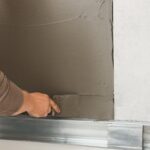When it comes to owning a home, there are various ways to enhance its value and overall appeal. One such way is through making capital improvements. But what exactly qualifies as a capital improvement? In this article, we will define capital improvements for homeowners and explore the benefits they offer.
Capital improvements differ from simple repairs and maintenance tasks in that they add value to the property and enhance its longevity. These are significant upgrades or renovations that go beyond routine upkeep and contribute to the long-term appreciation of the home. Whether it’s an exterior enhancement, interior transformation, energy efficiency upgrade, or incorporation of smart home technology, capital improvements are investments that pay off in more ways than one.
Understanding the difference between capital improvements and regular repairs is crucial for homeowners looking to make strategic upgrades. While repairs address immediate issues like broken appliances or leaky pipes, capital improvements focus on enhancing the overall quality and functionality of the home. By making these substantial changes, homeowners not only create a more comfortable living environment but also increase their property’s appraisal value over time.
Understanding the Difference
When it comes to maintaining and upgrading a home, it’s important for homeowners to understand the distinction between capital improvements and repairs or maintenance. While repairs and maintenance are necessary to keep a home in good condition, capital improvements go beyond this basic level of upkeep.
What are Repairs and Maintenance?
Repairs and maintenance typically involve fixing existing issues or preventing further damage to a home. Examples of repairs include fixing a leaky roof, repairing a broken window, or replacing damaged floor tiles. Maintenance tasks might include regular cleaning, painting walls, or servicing HVAC systems. These activities are necessary for ensuring that the home remains functional and habitable. However, repairs and maintenance do not significantly enhance the value of the property.
The Significance of Capital Improvements
Capital improvements, on the other hand, involve making upgrades or additions to a home that increase its value or extend its useful life. These projects go beyond simple repairs and maintenance and often involve significant investment in terms of time and money. Examples of capital improvements include remodeling the kitchen or bathroom, adding an extension or deck, installing new flooring throughout the house, or upgrading to energy-efficient appliances.
The distinguishing factor between capital improvements and repairs/maintenance is that capital improvements have a lasting impact on the value of the property. These upgrades generally result in increased appraised value when it comes time to sell. Additionally, they can improve the overall comfort, functionality, aesthetics, and energy efficiency of the home while providing long-term benefits for homeowners.
Clearly understanding the difference between capital improvements and repairs/maintenance is crucial for homeowners who want to make strategic investments in their properties. By focusing on capital improvements that enhance both quality of life and value appreciation over time, homeowners can make informed decisions about how best to allocate their resources for long-term benefits.
Increase in Value
Capital improvements can have a significant impact on the overall value of a home. When it comes to home appraisals, these improvements can enhance the appraisal value and potentially lead to a higher selling price. This section will delve into how capital improvements contribute to increasing the value of a home during an appraisal process.
Understanding Home Appraisal
Before exploring how capital improvements enhance home appraisal, it is important to understand how home appraisals work. A home appraisal is an unbiased estimate of a property’s fair market value conducted by a licensed and certified appraiser. During this process, the appraiser evaluates various factors such as the condition of the property, size, location, amenities, recent sales of comparable properties in the area, and any upgrades or improvements made to the property.
The Impact of Capital Improvements
One of the main ways that capital improvements enhance home appraisal is by increasing the overall condition and quality of the property. By investing in upgrades and enhancements, homeowners are able to showcase their property as attractive and well-maintained. This can lead to a higher appraised value as compared to similar properties in the area that may not have undergone significant improvements.
Furthermore, capital improvements that address functional or structural issues such as replacing outdated plumbing or electrical systems, upgrading insulation, or renovating kitchens and bathrooms can significantly increase a property’s appraised value. These types of improvements not only improve the quality and functionality of a home but also make it more appealing to potential buyers.
It is worth noting that not all capital improvements guarantee an increase in home appraisal value. It is essential for homeowners to carefully select upgrades that align with market demands in their area and focus on enhancing features that are considered desirable for potential buyers. By doing so, homeowners can maximize their investment and ensure that their capital improvements positively impact their home’s appraisal value.
Exterior Upgrades
When considering capital improvements to enhance the value of your home, focusing on exterior upgrades can greatly increase its curb appeal. Improving the appearance of your home’s exterior not only makes a strong first impression, but it can also boost its market value. Here are some examples of exterior upgrades that are considered capital improvements:
- Landscaping: Investing in professional landscaping can transform the look and feel of your property. Adding flower beds, shrubs, trees, and a well-maintained lawn can instantly elevate your home’s curb appeal. Additionally, installing outdoor lighting fixtures can enhance its beauty during the evening hours.
- Driveway and Walkways: Repairing or replacing your driveway and walkways is another capital improvement that can significantly improve your home’s exterior. Cracked or uneven pavement not only looks unattractive but can also pose safety hazards. Installing new pavers or concrete can give your home an updated and polished look.
- Siding or Exterior Painting: Updating the siding or repainting the exterior of your home is a major capital improvement that can completely transform its appearance. Whether you choose to replace outdated siding with modern materials like vinyl or fiber cement, or simply give it a fresh coat of paint, these upgrades go a long way in enhancing curb appeal.
| Capital Improvement | Average Return on Investment (ROI) |
|---|---|
| Landscaping | 150% |
| Driveway/Walkway Replacement | 50-75% |
| Siding Replacement | 75-85% |
(Source: National Association of Realtors)
As shown in the table above, these exterior capital improvements can provide a significant return on investment when it comes to increasing your home’s value. It is important to note that these percentages can vary depending on factors such as location and market conditions. However, these figures demonstrate the potential value added by investing in exterior upgrades.
By focusing on enhancing the curb appeal of your home through exterior capital improvements, you not only create an inviting and visually appealing exterior but also increase its overall value. Making these upgrades can be a worthwhile investment, attracting potential buyers and giving you peace of mind knowing that your home stands out in the neighborhood.
Interior Enhancements
When it comes to capital improvements, homeowners often focus on enhancing the interior of their homes. These types of improvements can transform the living space, making it more comfortable and appealing. Whether you’re looking to increase your home’s value or create a more enjoyable living environment, there are various capital improvements that you can consider.
Kitchen Remodel
One popular capital improvement for transforming the living space is a kitchen remodel. The kitchen is often considered the heart of the home and upgrading it can have a significant impact on both aesthetics and functionality.
This could include updating appliances, installing new countertops and cabinetry, or even reconfiguring the layout to create a more open concept design. A well-designed kitchen remodel not only enhances the visual appeal of your home but can also make cooking and entertaining more enjoyable.
Bathroom Renovation
Another interior enhancement that homeowners frequently invest in is a bathroom renovation. Similar to a kitchen remodel, upgrading your bathrooms can greatly improve both usability and visual appeal. Consider replacing outdated fixtures with modern counterparts, installing new tiling or flooring, and updating vanities or storage solutions. Additionally, incorporating energy-efficient features such as low-flow toilets or LED lighting can further enhance the functionality of your bathrooms while reducing utility costs.
Flooring Upgrades
Updating flooring throughout your home is another capital improvement that can completely transform the living space. Whether you choose hardwood, tile, laminate, or carpeting, installing new flooring can breathe new life into any room. Different types of flooring materials offer distinct benefits in terms of durability, maintenance requirements, and aesthetics. It’s important to choose high-quality flooring options that withstand heavy foot traffic and are suitable for each specific area within your home.
Interior Painting
An affordable yet effective way to transform the living space is by repainting the interior walls. A fresh coat of paint can completely change the look and feel of a room, instantly making it feel more updated and inviting. Consider choosing neutral colors that have broad appeal and can easily coordinate with various décor styles. However, don’t shy away from incorporating accent walls in bolder shades to add personality and visual interest.
By investing in these capital improvements, you can truly transform the living space in your home. From kitchen remodels to bathroom renovations, flooring upgrades, and interior painting, these enhancements not only increase your home’s value but also create a more enjoyable and comfortable living environment for you and your family.
Energy Efficiency Enhancements
Energy efficiency enhancements are an excellent investment for homeowners looking to both save money on utility bills and increase the value of their home. These upgrades not only contribute to a more sustainable environment but also provide long-term financial benefits. By reducing energy consumption and improving the overall efficiency of a home, these improvements can have a significant impact on monthly expenses and home appraisal values.
One of the most common energy efficiency enhancements is upgrading insulation. Proper insulation helps retain heat during colder months and keep cool air in during the hotter months, resulting in reduced reliance on heating and cooling systems. This upgrade not only creates a more comfortable living space but also decreases energy consumption, leading to lower utility bills.
Another popular enhancement is replacing old, inefficient windows with energy-efficient ones. Energy-efficient windows are designed to minimize heat loss or gain, helping maintain consistent temperatures inside the home. Additionally, these windows often have better noise reduction capabilities and improved resistance against drafts, providing homeowners with added comfort.
Installing programmable thermostats is another effective way to enhance energy efficiency in a home. These devices allow homeowners to set specific temperature schedules based on their daily routines and adjust settings remotely if needed. By optimizing heating and cooling usage, programmable thermostats can help reduce wasteful energy consumption while still ensuring a comfortable indoor environment.
Smart Home Technology
The advent of smart home technology has revolutionized the way homeowners interact with their living spaces. Smart home technology refers to the use of automated systems and devices that can be controlled remotely or through voice commands to enhance convenience, comfort, and efficiency in a home. These advancements have also made smart home technology a popular choice for capital improvements among homeowners looking to modernize their properties.
One example of a capital improvement related to smart home technology is the installation of a smart thermostat. A smart thermostat allows homeowners to control the temperature of their homes remotely using their smartphones or through voice assistance devices such as Amazon Echo or Google Home. This not only provides convenience but also saves energy by allowing homeowners to adjust the temperature based on occupancy patterns and weather conditions.
Another popular capital improvement in terms of smart home technology is the installation of smart lighting systems. Smart lighting systems allow homeowners to control the lighting in their homes through smartphone apps, voice commands, or automated timers. These systems often come with energy-saving features such as motion sensors that automatically turn off lights in unoccupied rooms. Additionally, some smart lighting systems can be programmed to simulate occupancy when homeowners are away, enhancing security.
Investing in smart home technology not only offers convenience and energy savings but can also increase the value of a home. According to a report by Statista, the global market revenue for smart homes is projected to reach over 141 billion U.S. dollars by 2023, indicating a growing demand for these features among potential buyers.
Incorporating smart home technology into capital improvements not only improves the functionality of a home but also positions it as an attractive option in an increasingly tech-savvy market.
| Smart Home Technology | Benefits |
|---|---|
| Smart Thermostats | – Remote temperature control
|
| Smart Lighting Systems | – Remote lighting control
|
Tax Benefits
When making capital improvements to your home, there is a potential benefit that homeowners should be aware of: tax benefits. Capital improvements can lower your tax liability by reducing the amount of taxable gain when you sell your home. Here are some important considerations regarding the tax benefits of capital improvements:
- Increased Basis: A capital improvement increases the basis or cost of your home. The basis is one of the factors used to calculate your taxable gain when you sell your property. By increasing the basis, you effectively reduce the amount of taxable gain, which can lower your overall tax liability.
- Eligible Expenses: Not all home improvements qualify for tax benefits. To be considered a capital improvement, an expense must add value to your home, prolong its useful life, or adapt it to new uses. Examples of eligible expenses include adding a new room, renovating bathrooms or kitchens, installing a swimming pool, or adding energy-efficient features like solar panels.
- Keep Track of Your Expenses: It is crucial to keep detailed records and receipts for all capital improvement expenses. This documentation will be necessary both for calculating any taxable gain when you sell your home and for substantiating any deductions or credits related to these improvements on your annual tax return.
To take advantage of the tax benefits associated with capital improvements, consult with a qualified tax professional who can guide you through the process and ensure you maximize your savings while remaining compliant with relevant tax laws and regulations.
In summary, capital improvements can have a positive impact on your tax liability by reducing the amount of taxable gain when selling your home. By understanding what qualifies as a capital improvement and keeping accurate records, homeowners can take full advantage of these potential tax benefits and optimize their investment in their homes.
DIY vs. Hiring Professionals
When planning capital improvements for your home, one important decision to make is whether to take the do-it-yourself (DIY) route or hire professionals to handle the project. Each option has its own set of considerations that homeowners should keep in mind.
DIY Considerations
Opting for DIY projects can be a cost-effective way to save money on labor costs. Many homeowners enjoy the satisfaction of completing tasks themselves and may have certain skills or experience that make them feel confident in their ability to tackle capital improvements without professional help.
However, it is important to carefully evaluate your own skill level and expertise before taking on a project. Some capital improvements may require specialized knowledge, tools, or permits that you may not possess. Attempting complex projects without the necessary expertise could lead to costly mistakes or subpar results.
Another consideration when choosing the DIY route is the amount of time you are willing and able to dedicate to the project. Capital improvements can be time-consuming, especially if you have limited availability due to work or other commitments. Additionally, DIY projects often take longer than if professionals were hired since they may need to learn new skills or troubleshoot unexpected issues along the way.
If you do decide to go DIY, it is essential to thoroughly research and plan your project ahead of time. This includes making sure you have all the necessary tools and materials, as well as understanding any building codes or regulations that may apply. Adequate preparation can help minimize potential risks and ensure a successful outcome.
Hiring Professionals Considerations
While hiring professionals for capital improvements typically comes with higher upfront costs compared to DIY projects, there are several benefits to consider. First and foremost, professionals bring expertise and experience in their respective fields, ensuring high-quality workmanship and minimizing potential mistakes.
Professional contractors also have access to specialized tools and equipment that may not be readily available for personal use. This enables them to efficiently complete projects and achieve professional-grade results. Additionally, hiring professionals can save homeowners time and energy, as they will handle all aspects of the project from start to finish.
Another advantage to hiring professionals is that they often have established relationships with suppliers, allowing them to source materials at a lower cost. They may be able to obtain discounts or special pricing that would not be accessible to individual homeowners.
When choosing professionals for your capital improvements, it is essential to thoroughly research and vet potential contractors. Take the time to check their credentials, read reviews from past clients, and request references if needed. This will help ensure you hire a reputable contractor who can deliver the desired results.
Budgeting for Capital Improvements
When it comes to budgeting for capital improvements, it’s important for homeowners to have a strategic plan in place. Prioritizing and optimizing your investment can ensure that you make the most out of your budget and enhance your home in the best possible way. Here are some tips to help you effectively budget for capital improvements:
- Assess the condition of your home: Start by evaluating the current state of your home and identifying areas that require improvement. Make a list of all the necessary capital improvements and categorize them based on urgency, cost, and potential return on investment.
- Research costs: Once you have identified the capital improvements you want to make, research the costs associated with each project. Get multiple quotes from contractors or suppliers to ensure that you are getting a fair price. It’s also important to factor in any additional expenses such as permits, labor costs, and supplies.
- Set a realistic budget: Determine how much you are willing to spend on capital improvements based on your financial situation and long-term goals for your home. Consider factors such as your available savings, financing options, and potential return on investment when setting a budget.
- Prioritize high-impact projects: Focus on making capital improvements that will have the highest impact on both functionality and aesthetics of your home. For example, upgrading the kitchen or bathroom tends to provide a significant return on investment and can greatly enhance the value of your home.
- Consider long-term savings: While it may be tempting to choose cheaper options when it comes to capital improvements, consider investing in energy-efficient upgrades or renewable energy sources that can save you money in the long run. Adding insulation, installing solar panels, or upgrading to energy-efficient appliances can lead to substantial savings on utility bills over time.
- Plan for contingencies: When budgeting for capital improvements, it’s essential to prepare for unexpected expenses or delays that may arise during the project. Set aside a contingency fund of at least 10% of your total budget to cover any unforeseen costs.
By following these tips and creating a well-thought-out budget for capital improvements, homeowners can make informed decisions about their investments and ensure that they maximize the value and comfort of their homes. Remember that careful planning, research, and prioritization are key to optimizing your investment and achieving the desired results.
Conclusion
In conclusion, capital improvements play a vital role in maximizing the value and comfort of your home. By understanding the difference between capital improvements and repairs/maintenance, homeowners can make informed decisions about investing in their property. These improvements not only enhance the aesthetic appeal of the home but also increase its appraisal value.
Exterior upgrades are a popular choice for capital improvements as they greatly enhance curb appeal. Examples include landscaping, adding a patio or deck, installing new roofing or siding, and upgrading the driveway. These enhancements not only make your home more visually appealing but also create a welcoming first impression for potential buyers.
Interior enhancements are equally important in transforming the living space. Renovating the kitchen or bathroom, adding extra rooms or storage space, replacing old flooring or windows – these types of improvements not only improve functionality but also increase the overall value of your home.
Energy efficiency enhancements are becoming increasingly popular due to their cost-saving benefits and environmental impact. Upgrading to energy-efficient appliances, installing smart thermostats or solar panels, improving insulation – these improvements not only lower your energy bills but also add value to your property.
Furthermore, incorporating smart home technology into your home is another way to capitalize on modern living trends. Smart security systems, automated lighting and heating controls, voice-activated assistants – these capital improvements not only enhance convenience but also attract tech-savvy buyers in today’s market.
One significant advantage of making capital improvements to your home is the potential tax benefits it offers. Homeowners may be eligible for deductions or credits on their taxes when they invest in certain qualified capital improvements. Consulting with a tax professional can help you navigate this aspect and maximize your tax savings.
When planning capital improvements, homeowners must consider whether to undertake the project themselves or hire professionals. While DIY projects may save money upfront, hiring professionals ensures quality workmanship and can potentially increase the resale value of your home.
Finally, budgeting for capital improvements is essential to prioritize and optimize your investment. By setting a realistic budget, homeowners can focus on the most impactful improvements that align with their financial goals.
In summary, capital improvements are a long-term strategy for maximizing the value and comfort of your home. Whether it’s enhancing curb appeal, transforming the living space, incorporating energy efficiency enhancements or smart home technology, these improvements not only make your home more enjoyable to live in but also increase its resale value. With careful planning and consideration, homeowners can make informed decisions about which capital improvements to prioritize in order to achieve their desired outcomes.
Frequently Asked Questions
What does the IRS consider capital improvements on home?
The IRS considers capital improvements on a home to be any significant enhancements or upgrades that increase the property’s value, extend its useful life, or adapt it for new uses. These improvements are considered to be investments in the property rather than routine repairs or maintenance.
The key distinction is that capital improvements add value to the home and typically involve substantial expenditure.
What is an example of a capital improvement?
An example of a capital improvement would be a homeowner adding a new room or an additional floor to their house. This type of enhancement significantly increases the property’s square footage and adds to its overall value.
Other examples could include major renovations such as remodeling the kitchen or bathrooms, installing a new roof, expanding outdoor living spaces with decks or patios, or upgrading electrical and plumbing systems.
What items can be home improvements to not be considered capital gains?
Home improvements that are not considered capital gains by the IRS are those that do not substantially add value to the property or increase its overall worth. These can include routine maintenance tasks like repainting walls, fixing minor leaks, replacing broken fixtures, or repairing damaged flooring.
Generally speaking, cosmetic changes that solely enhance aesthetic appeal but do not have a significant impact on the home’s value are also unlikely to be considered capital gains. However, it is essential to consult with a tax professional or refer to specific IRS guidelines for detailed information regarding what qualifies as a non-capital gain home improvement in various situations.

I’m thrilled to have you here as a part of the Remodeling Top community. This is where my journey as an architect and remodeling enthusiast intersects with your passion for transforming houses into dream homes.





